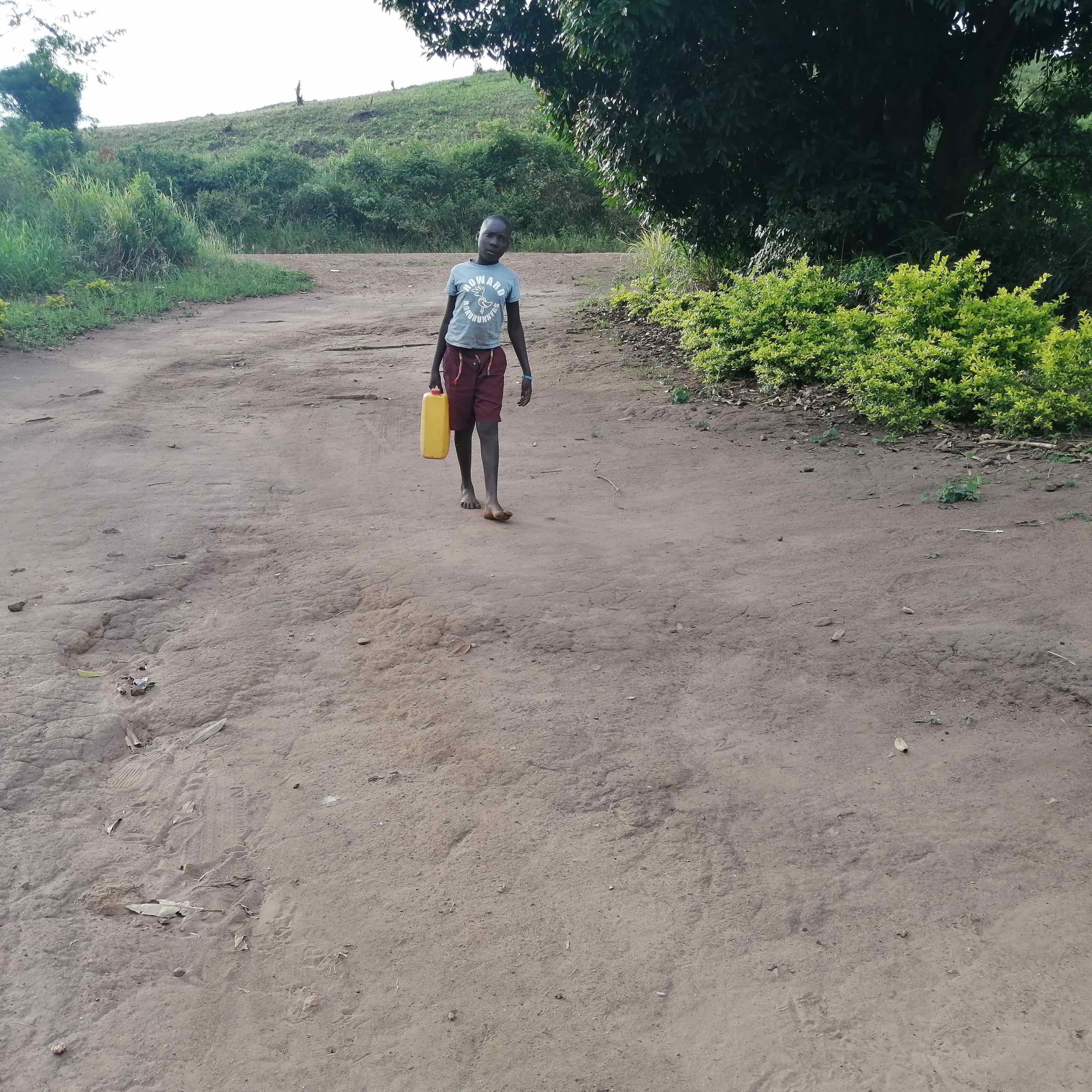The nearest source to Byerima Community is two kilometers (1.24 miles) away. 500 people live in Byerima. For the community members who don't own a motorcycle or bicycle, this is an unbearable distance. This means only one trip to the water source per day, splitting one 20-liter jerrycan between each family member.
When the people of Byerima do arrive at the well, they often find it crowded, as they share the water point with several other communities, which adds to the time they spend fetching. Some people reported spending two to three hours a day just collecting water.

Moses Musinguzi, a 43-year-old community member, gave us details. "The water crisis in this community has impacted a lot on our lives. As we send our children to collect water, they have encountered several accidents, and others even lost lives. Our girl children are highly affected as a result of delays at the water source, which exposes them to sexual harassments, leading to early pregnancies and school dropouts within the village."
"Due to the long distance I have to walk to collect water, I get very tired and even developed a chest problem," said Joan Tumwijuke, a 34-year-old housewife. "It's now the work of my husband to collect water since I was stopped due to my medical condition. Providing a new water point will reduce the long distance we move to access water from other communities."
Maurice, a 14-year-old boy (pictured below), told us the difficulties he has with fetching water for his family. "The fact that we do not have water in this village has highly affected my studies because I delay at the source and fail to do my homework. [I] am even sometimes beaten at school whenever I fail to complete my homework."

The lack of water for this community means maintaining proper hygiene is nearly impossible. Although 70% of the community's people have latrines available to use, with no water to clean them and no spare water to fill their handwashing stations, people simply go without.
Providing access to safe and clean water to this community through the construction of a new water point will motivate the community to improve on their sanitation and hygiene practices and improve many facets of their lives.
Here’s what we’re going to do about it:
New Borehole
This new borehole is an exciting opportunity for this community! We work with the community to determine the best possible sites for this well.
We conducted a hydrogeological survey and the results indicated the water table is an ideal candidate for a borehole well. Due to a borehole well's unique ability to tap into a safe, year-round water column, it will be poised to serve all of the water needs for this community, even through the dry months.
Community members will help collect the needed construction materials such as sand, rocks, and water for mixing cement. They will also provide housing and meals for the work team, in addition to providing local laborers. We will complement their materials by providing an expert team of artisans and drilling professionals, tools, hardware, and the hand-pump. Once finished, water from the well will then be used by community members for drinking, handwashing, cooking, cleaning, and much more.
Training
Training’s main objectives are the use of latrines and observing proper hygiene practices since these goals are inherently connected to the provision of clean water. Open defecation, water storage in unclean containers and the absence of hand-washing are all possible contaminants of a household water supply. Each participating village must achieve Open Defecation Free status (defined by one latrine per household) prior to the pump installation for this borehole well.
This social program includes the assignment of one Community Development Officer (CDO) to each village. The CDO encourages each household to build an ideal homestead that includes: a latrine, a handwashing facility, a separate structure for animals, a rubbish pit and a drying rack for dishes.
We also implement the Community-Led Total Sanitation (CLTS) approach with each of our village partners. This aims to improve the sanitation and hygiene practices and behaviors of a village. During these sessions, village leaders naturally emerge and push the community to realize that the current practices of individual households – particularly the practice of open defecation – are not only unhealthy, but affect the entire village. CLTS facilitates a process in which community members realize the negative consequences of their current water, sanitation and hygiene behaviors and are inspired to take action. Group interactions are frequent motivators for individual households to build latrines, use them, and demand that other households do the same.
Improved Sanitation
The aim is that all households own an improved latrine. Many households do not use a latrine but use the bush. Due to open defecation, feces are spread all over the village. This leads to waterborne diseases and contamination of groundwater and surface water. Our aim is that the community is able to live a healthy life free of preventable diseases. We endeavor that at the end of our presence in the community, people will have both access to sustainable, clean water and access to sanitation. We have now organized families to form digging groups for latrine construction, and empowered them with tools to use.

 Borehole Well and Hand Pump
Borehole Well and Hand Pump
 Rehabilitation Project
Rehabilitation Project


























